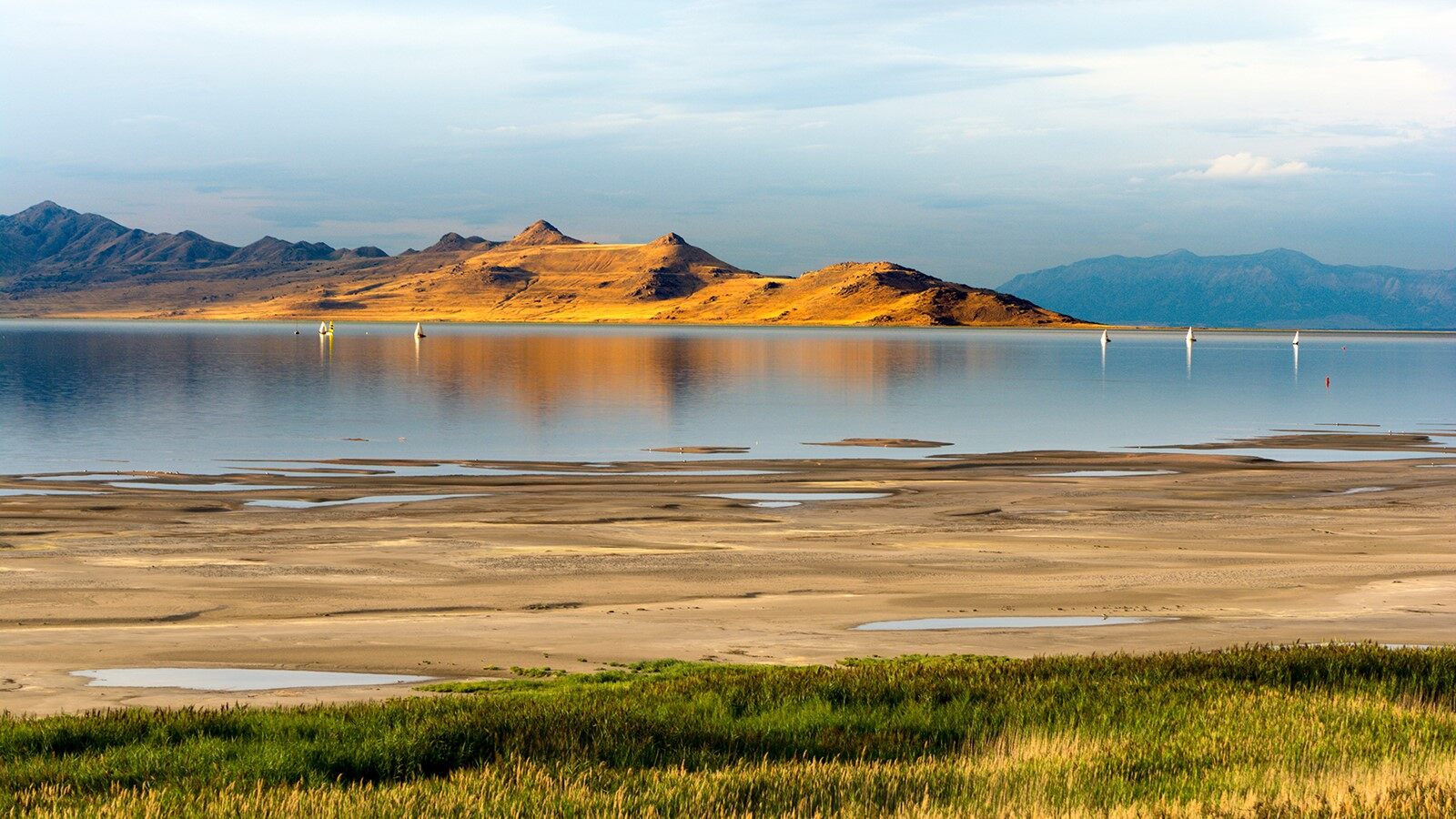
Located in the western United States, the Great Salt Lake is a natural wonder that has captured the curiosity of visitors and scientists alike. Spanning over 1,700 square miles, this mesmerizing body of water is renowned for its striking beauty, unique ecological features, and intriguing phenomena. In this article, we will explore 15 unbelievable facts about the Great Salt Lake, delving into its geology, wildlife, and cultural significance. From its astonishing salt concentration to the appearance of enchanting salt formations along its shores, there is no shortage of fascinating details to uncover. So, whether you’re a nature enthusiast, a history buff, or simply someone who enjoys learning about the wonders of our planet, get ready to be amazed by the incredible secrets hidden within the depths of the Great Salt Lake.
Key Takeaways:
- The Great Salt Lake is a massive, salty wonderland with high buoyancy, unique wildlife, and stunning landscapes, making it a must-visit for nature lovers and adventure seekers.
- From floating effortlessly on its surface to discovering ancient fossils, the Great Salt Lake offers a one-of-a-kind experience that showcases the marvels of nature and the region’s rich geological history.
The Great Salt Lake is the largest saltwater lake in the Western Hemisphere.
Stretching over 1,700 square miles, the Great Salt Lake is a natural wonder located in the U.S. state of Utah. Its vast expanse and high salt content make it a unique and fascinating destination for visitors from around the world.
It is saltier than the ocean!
The Great Salt Lake is infamous for its high salinity, which is even higher than that of the ocean. In fact, it contains approximately 7 times more salt than the average seawater.
The lake is rich in minerals.
Thanks to its high salt content, the Great Salt Lake is abundant in various minerals such as magnesium, potassium, and calcium. These minerals have made the lake a valuable source for extraction and commercial use.
You can float effortlessly in the lake.
Due to the high salt concentration, the buoyancy of the water is incredibly high, allowing visitors to effortlessly float on its surface. It’s a popular activity for tourists and locals alike!
The lake is a haven for bird lovers.
The Great Salt Lake is a crucial habitat for millions of migrating birds, making it a paradise for birdwatchers. Over 250 bird species have been recorded in the area, including rare and endangered species.
The lake has a distinctive smell.
One of the unique features of the Great Salt Lake is its distinct odor, which is often described as a combination of sulfur and brine. It adds to the sensory experience of visiting this natural wonder.
The lake is home to brine shrimp.
The waters of the Great Salt Lake are teeming with brine shrimp, tiny crustaceans that have adapted to the extreme salt conditions. They are an important food source for many bird species that inhabit the lake.
You can visit man-made islands in the lake.
In addition to its natural beauty, the Great Salt Lake is dotted with a few man-made islands. These islands were created as part of an effort to manage the lake’s ecosystem and provide nesting grounds for birds.
The lake is a popular spot for sailboats and yachts.
Despite its high salt content, the Great Salt Lake attracts sailing enthusiasts who enjoy the unique challenge of navigating its waters. The lake’s strong winds and breathtaking scenery make it a favorite destination for sailors.
The lake changes in size throughout the year.
The Great Salt Lake is known for its fluctuating size. Depending on the rainfall and other environmental factors, the lake’s surface area can vary dramatically from year to year, sometimes expanding or shrinking by thousands of acres.
The lake’s pink hue is caused by microorganisms.
At certain times, the Great Salt Lake takes on a pinkish hue. This is due to a type of halophilic bacteria called Dunaliella salina, which thrives in the high saline conditions and produces a red pigment.
You can find ancient fossils at the lake.
The Great Salt Lake is a treasure trove for fossil enthusiasts. Along its shorelines, fossilized remains of ancient creatures, including prehistoric horse skeletons, have been discovered, offering a glimpse into the region’s geological history.
The lake is surrounded by stunning landscapes.
Exploring the Great Salt Lake means immersing yourself in breathtaking scenery. From sandy beaches to rugged mountain ranges, the contrasting landscapes that surround the lake provide endless opportunities for outdoor adventures.
It was once part of a massive prehistoric lake.
Millions of years ago, the area occupied by the Great Salt Lake was part of Lake Bonneville, a massive prehistoric lake that covered much of present-day Utah. The remnants of Lake Bonneville can still be seen in the form of ancient shorelines and terraces.
The lake has an important economic impact.
The Great Salt Lake plays a significant role in Utah’s economy. It supports various industries such as mineral extraction, recreational tourism, and birdwatching, contributing to the state’s overall economic growth and development.
Conclusion
In conclusion, the Great Salt Lake is truly a remarkable natural wonder with its astonishing features and rich history. From its mesmerizing pink hues to its unique wildlife, there is no shortage of extraordinary facts to discover about this incredible lake. Whether you’re fascinated by its salt content or intrigued by its vibrant ecosystem, the Great Salt Lake offers a multitude of experiences for nature enthusiasts and curious explorers alike. So, next time you find yourself in the beautiful state of Utah, make sure to visit the Great Salt Lake and witness firsthand the unbelievable wonders it has to offer.
FAQs
1. How did the Great Salt Lake form?
The Great Salt Lake was formed thousands of years ago by the rising and receding waters of ancient Lake Bonneville. As the lake dried up, it left behind the Great Salt Lake, which is now the largest saltwater lake in the Western Hemisphere.
2. Why is the Great Salt Lake so salty?
The Great Salt Lake is highly saline due to its lack of an outlet. The water flows into the lake from various streams and rivers but has no way to drain out, causing the water to evaporate and leaving behind concentrated salt minerals.
3. Can you swim in the Great Salt Lake?
Yes, you can swim in the Great Salt Lake, but be prepared for a unique experience. The high salt content makes the water denser, allowing swimmers to effortlessly float on the surface. However, the lake water can be quite briny, so be careful to avoid getting it in your eyes or mouth.
4. Is the Great Salt Lake inhabited by any wildlife?
Absolutely! The Great Salt Lake is a vital habitat for a diverse range of wildlife. It provides nesting areas for numerous bird species, including pelicans, seagulls, and avocets. The lake is also home to various brine shrimps and brine flies, which serve as a crucial food source for migratory birds.
5. Are there any recreational activities available at the Great Salt Lake?
Yes, the Great Salt Lake offers several recreational activities. Visitors can enjoy boating, kayaking, and paddleboarding on the lake’s calm waters. There are also designated camping areas and hiking trails, allowing visitors to explore the surrounding natural beauty.
6. Can you extract salt from the Great Salt Lake?
Yes, salt extraction is a significant industry in the Great Salt Lake region. The lake’s high salt content makes it an ideal source of commercially valuable salt. Companies harvest the salt by pumping brine water into shallow ponds and allowing the water to evaporate, leaving behind the salt crystals.
7. Why does the Great Salt Lake change in size?
The size of the Great Salt Lake can fluctuate depending on various factors, including rainfall, evaporation rates, and water diversions. During periods of heavy rain, the lake can expand significantly, while extended periods of drought can cause the lake’s water levels to decrease.
8. Are there any geological formations around the Great Salt Lake?
Yes, the Great Salt Lake is surrounded by stunning geological formations. The most famous of these is the Bonneville Salt Flats, a vast salt pan that stretches for miles. The salt flats are incredibly flat and provide a picturesque landscape known for its use in land speed record attempts.
Great Salt Lake's mesmerizing beauty and unique characteristics make it a must-visit destination for nature enthusiasts and curious travelers alike. If you're planning a trip to Utah's capital, be sure to check out our article on Salt Lake City, which offers a wealth of information about this vibrant metropolis and its surrounding attractions. From the city's rich history and cultural landmarks to its thriving food scene and outdoor recreation opportunities, you'll find plenty of reasons to explore Salt Lake City and its stunning natural surroundings.
Was this page helpful?
Our commitment to delivering trustworthy and engaging content is at the heart of what we do. Each fact on our site is contributed by real users like you, bringing a wealth of diverse insights and information. To ensure the highest standards of accuracy and reliability, our dedicated editors meticulously review each submission. This process guarantees that the facts we share are not only fascinating but also credible. Trust in our commitment to quality and authenticity as you explore and learn with us.


